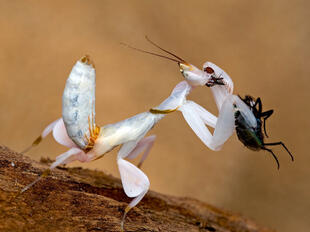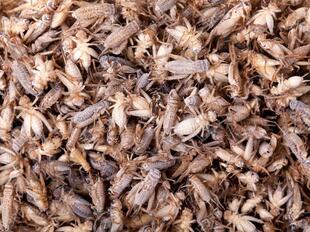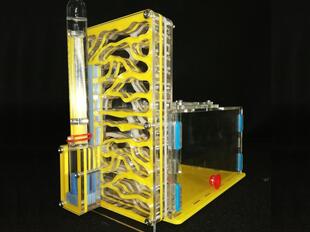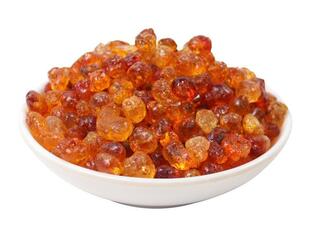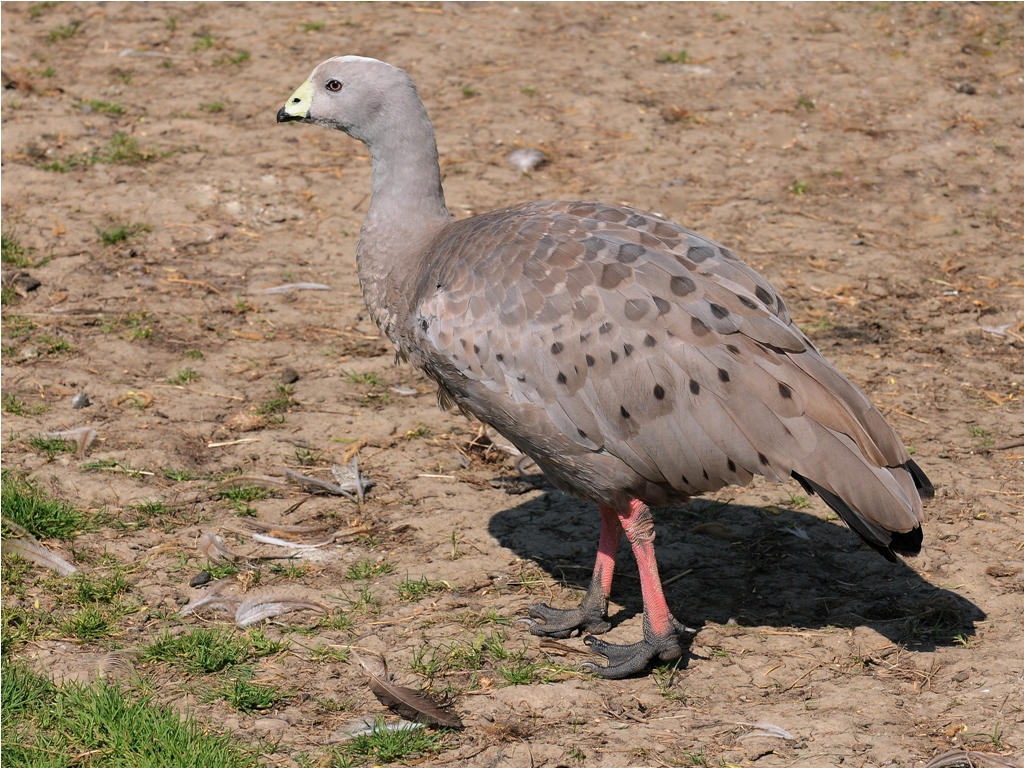
Cape Barren goose(Cereopsis novaehollandiae)
Phylum —chordata
Class — aves
Order — anseriformes
Family — anatidae
Genus – cereopsis
Appearance
These are bulky geese and their almost uniformly grey plumage, bearing rounded black spots, is unique. The tail and flight feathers are blackish and the legs are pink with black feet. The short, decurved black bill and green cere gives it a very peculiar expression.
The Cape Barren goose is 75 to 100 cm (30 to 39 in) long, weighs 3 to 7 kg (6.6 to 15.4 lb) and has a 150 to 190 cm (59 to 75 in) wingspan; males are somewhat larger than females.
Habitat
The Cape Barren goose is endemic to Australia and was introduced into New Zealand unsuccessfully at least three times between 1869 and 1874.
Behavior
The Cape Barren geese are diurnal birds, spending most of the day grazing. These birds can drink salty and brackish water, due to which the Cape Barren geese are able to live on separated offshore islands throughout the year. The Cape Barren geese don’t tend to swim and will enter the water only in order to protect their chicks.
At the breeding season, these birds congregate into loosely organized colonies, where nests are at a distance from each other.
The pair fiercely defends its nesting site against any intruders: foxes, dogs, humans and other geese. When threatened, the goose starts lifting its folded wings again and again while stretching out and pumping its neck, and speeds up the movements as the level of aggression increases. The Cape Barren geese attack, either rushing forward and keeping their head low and stretched out or running upright with spread wings.
Diet
This bird is herbivorous, eating only plant matter. The usual diet of Cape Barren geese includes tussock grass Poa poifornis, which is a common plant on the islands of their habitat. In addition, these birds consume wide variety of grass species, leaves, seeds and stems.
Reproduction
These birds are monogamous, mating for life. The mated pair establishes and strongly defends its territory.
The breeding season for the Cape Barren goose is from May to September and the female lays four to seven creamy white eggs. The nest is constructed of grasses and plant matter and is beautifully lined with soft down feathers. The chicks hatch after six weeks of incubation and are covered in black and white striped down feathers.
In captivity
Lifespan of these birds about 17 years.
When keeping this species, it is necessary to have a pool with water or a natural reservoir. The optimal ratio of the reservoir area to pasture is 20% water and 80% pasture. If you are not going to breed the birds, then the reservoir is not required. The optimal area of the entire enclosure is 200 sq. m. The optimal height of grass in the pasture is 7.5 cm.
It is necessary to build a poultry house on the territory of the aviary. Geese will be able to hide in it from the cold and wind in the cold season. You need constantly to update the litter in the poultry house. For such bedding, you will need about 40 kg of dry straw (hay). It is important to replace the wet bedding in time. Otherwise, the plumage quickly becomes dirty and does not protect the bird from the cold.
The poultry house should be made of wood or mud. Humidity and drafts are not allowed in it. In the poultry house, you need to install electricity and put heating lamps or ordinary incandescent lamps for heating birds in the winter. Lamps should heat the roost. As a perch, a shelf or crossbar is usually used, rising a meter above the floor of the poultry house.
During the construction of a poultry house, it is very important to take into account that at least one square meter of floor space should be allocated for one adult goose. With a higher density, the room will quickly become polluted, and the air in it will stagnate. This can cause diseases of wild geese and significantly reduce their productivity. Once a year, you need to whitewash the walls with freshly slaked lime.
Geese eat natural grasses. You can add to herbs: wheat grains, waterfowl pellets, and chicken feed. If there is not enough grass on the pasture, it is necessary to bring mown fresh grass. In winter, you can feed sliced vegetables, especially good to give cabbage and salads. Not averse to eating worms, insects and shellfish sometimes.
 Russian
Russian
 English
English




















